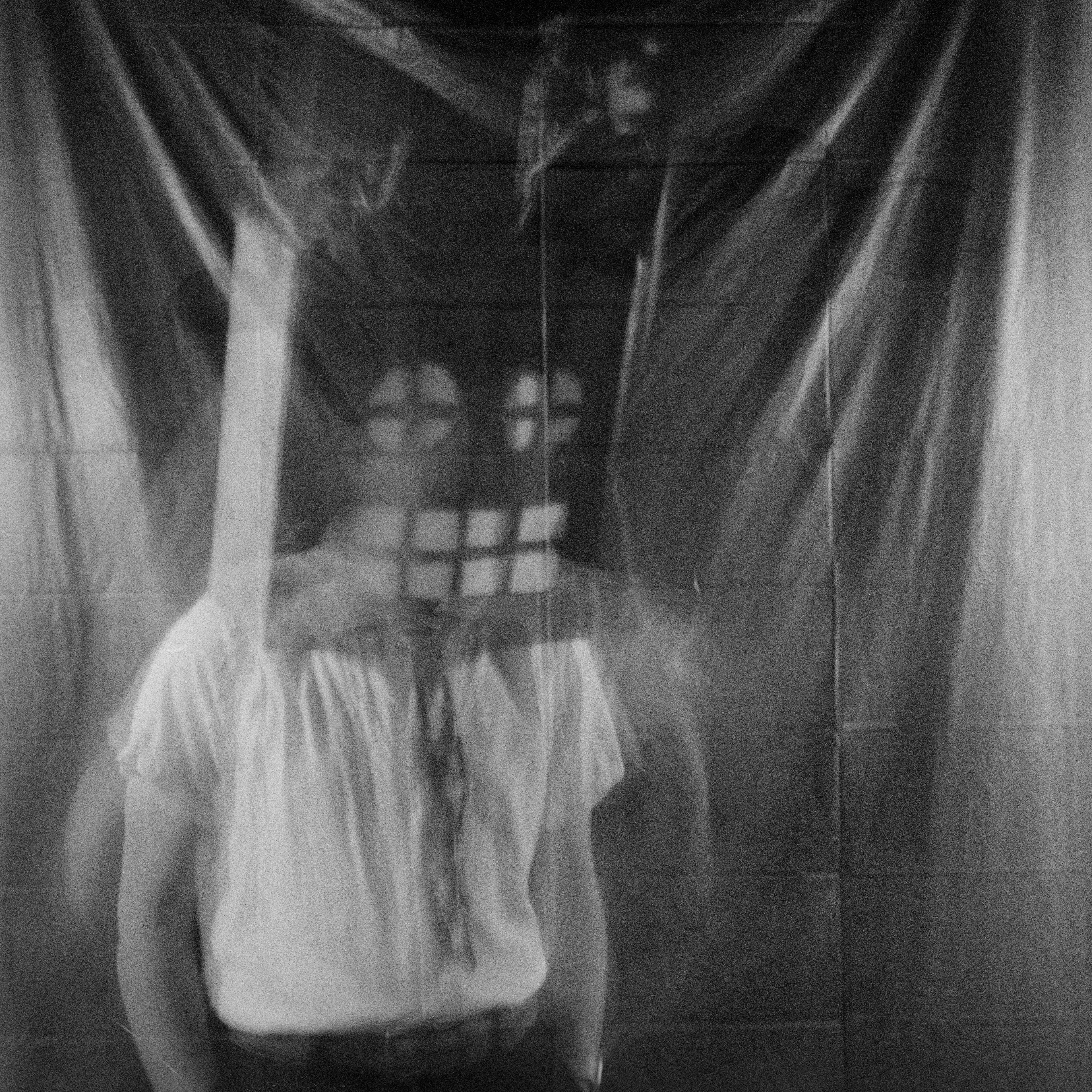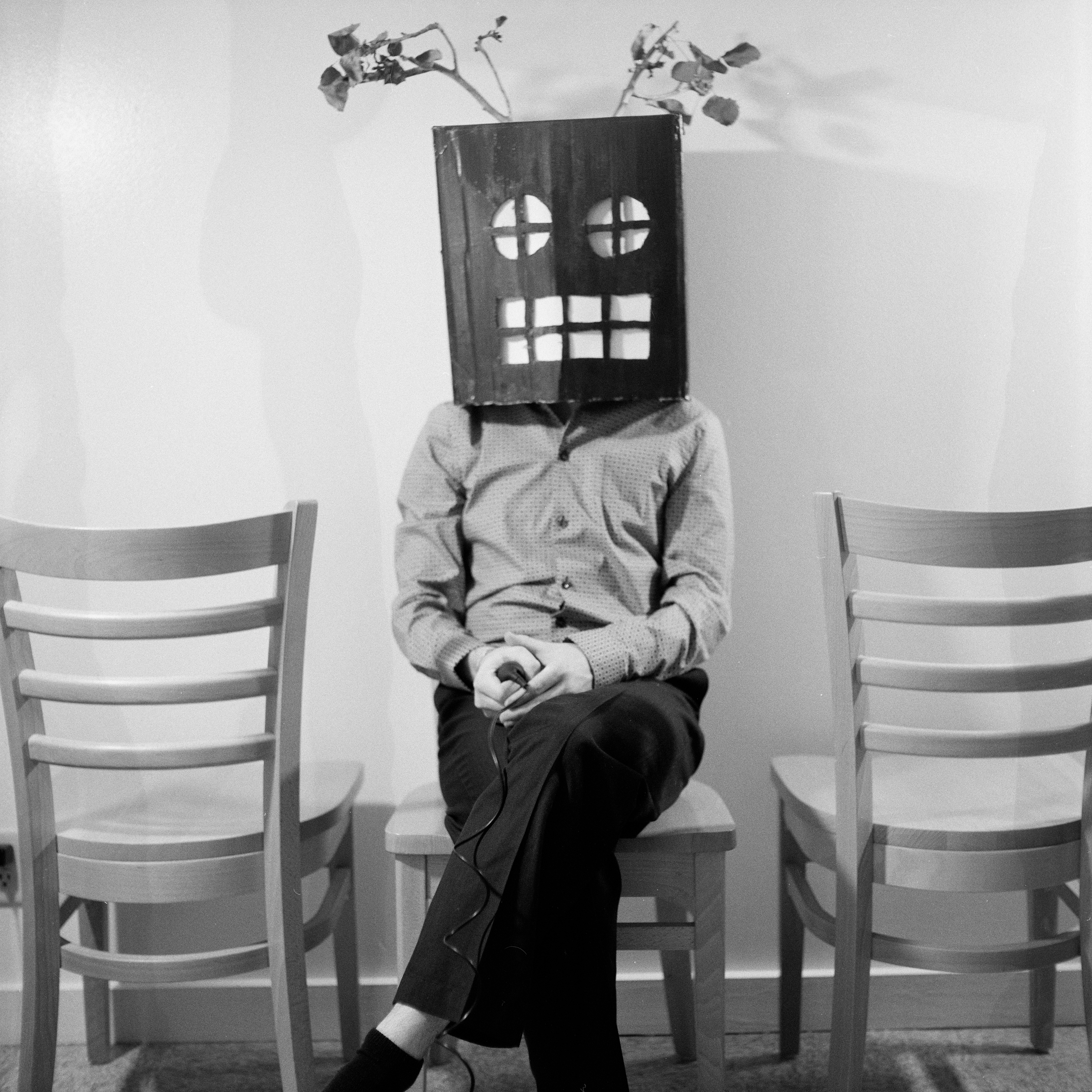
Nesting

Turing's Machine

Fauxtogram

Waiting Room

Exiting the Frame
This self-portrait series explores a set of internal conflicts I’ve been reflecting on, using masks to symbolize themes of identity, routine, and the tension between comfort and uncertainty. Rather than presenting a traditional self-portrait focused on my physical appearance, I chose to use these masks as a way to delve into the emotional and psychological spaces I’ve been navigating.
The first and last images in the series are a set, each addressing my attachment to safety and routine while acknowledging a desire to break free from it. The bird mask represents a guarded version of myself—someone who retreats into familiar spaces, hesitant to embrace change. In one image, I sit on my living room couch in pajamas. My posture—legs crossed, staring straight ahead—reflects the tension between wanting to stay in the familiar and feeling the pull toward something new. The black, expressionless eyes of the bird mask convey a sense of emotional distance, a reluctance to engage with the unpredictability of what lies beyond the known. In the last image of the series, I stand on the couch, with the upper half of my body cut off by the frame. This composition hints at the desire to move beyond the boundaries of routine and seek out new experiences. The cropped frame suggests a partial emergence—an incomplete but significant step toward embracing the unknown and finding joy in spontaneity.
The robot mask, seen in the middle three images in the series, reflects a different set of conflicts, particularly around identity, performance, and authenticity. The mask represents moments when I feel disconnected from my actions as if I am merely going through the motions of a role—whether in my personal life or my artistic practice. In the image titled Turing’s Machine, the long exposure and formal business wear accentuate this mechanical, almost robotic feeling, drawing parallels to Alan Turing’s famous Imitation Game. In the same way that a machine might convincingly imitate a human without truly being one, I sometimes question whether I am simply playing the part of an artist without fully inhabiting that identity. This internal struggle is central to the robot mask imagery: how do we know when we’ve crossed the line from acting like something to being it? At what point does the performance of a role—whether artist, professional, or individual—become indistinguishable from living it authentically?
